-
Welcome to rpgcodex.net, a site dedicated to discussing computer based role-playing games in a free and open fashion. We're less strict than other forums, but please refer to the rules.
"This message is awaiting moderator approval": All new users must pass through our moderation queue before they will be able to post normally. Until your account has "passed" your posts will only be visible to yourself (and moderators) until they are approved. Give us a week to get around to approving / deleting / ignoring your mundane opinion on crap before hassling us about it. Once you have passed the moderation period (think of it as a test), you will be able to post normally, just like all the other retards.
You are using an out of date browser. It may not display this or other websites correctly.
You should upgrade or use an alternative browser.
You should upgrade or use an alternative browser.
Dragon Age Dragon Age: The Veilguard Pre-Release Thread [GAME RELEASED, GO TO NEW THREAD]
- Thread starter Infinitron
- Start date
Tyranicon
A Memory of Eternity

- Joined
- Oct 7, 2019
- Messages
- 8,460
Uh... is the leak really enough content for a 40 min long video?
From what I gather, the leak just confirms what everybody expected from Dreadwolf: moving further away from its RPG base and towards action a la Mass Effect 2/3.
Myobi
Liturgist
- Joined
- Feb 26, 2016
- Messages
- 1,529
10 minutes, just skip the intro & context, go straight to the leaks information.Uh... is the leak really enough content for a 40 min long video?
From what I gather, the leak just confirms what everybody expected from Dreadwolf: moving further away from its RPG base and towards action a la Mass Effect 2/3.
AscendedFlames
Savant
- Joined
- Feb 13, 2018
- Messages
- 155
I disagree. I don't want to get into this debate for the millionth time. OD&D and 1E and now the OSR all focus/ed on Player skill rather than Character skill. You could say that it was 3.X that goonified D&D and it was all about number crunching and character "expression", I also don't mind how cRPGs are their own genre and many people here love that particular style of how RPGs are done, which in a way is just one interpretation of Tabletop into the computer space. But to say that they are like their "ancestors" is completely false. There are actual records of how Gygax used to play these games, and it's nothing like how 3.X or the parasites at Critical Role play those games. I do agree that real time's best implementation has always been skill-based.If it's like a god of war fight, it's not that bad. The combat was really fun.More like Assassin's Creed: Deep Roads, amirite?
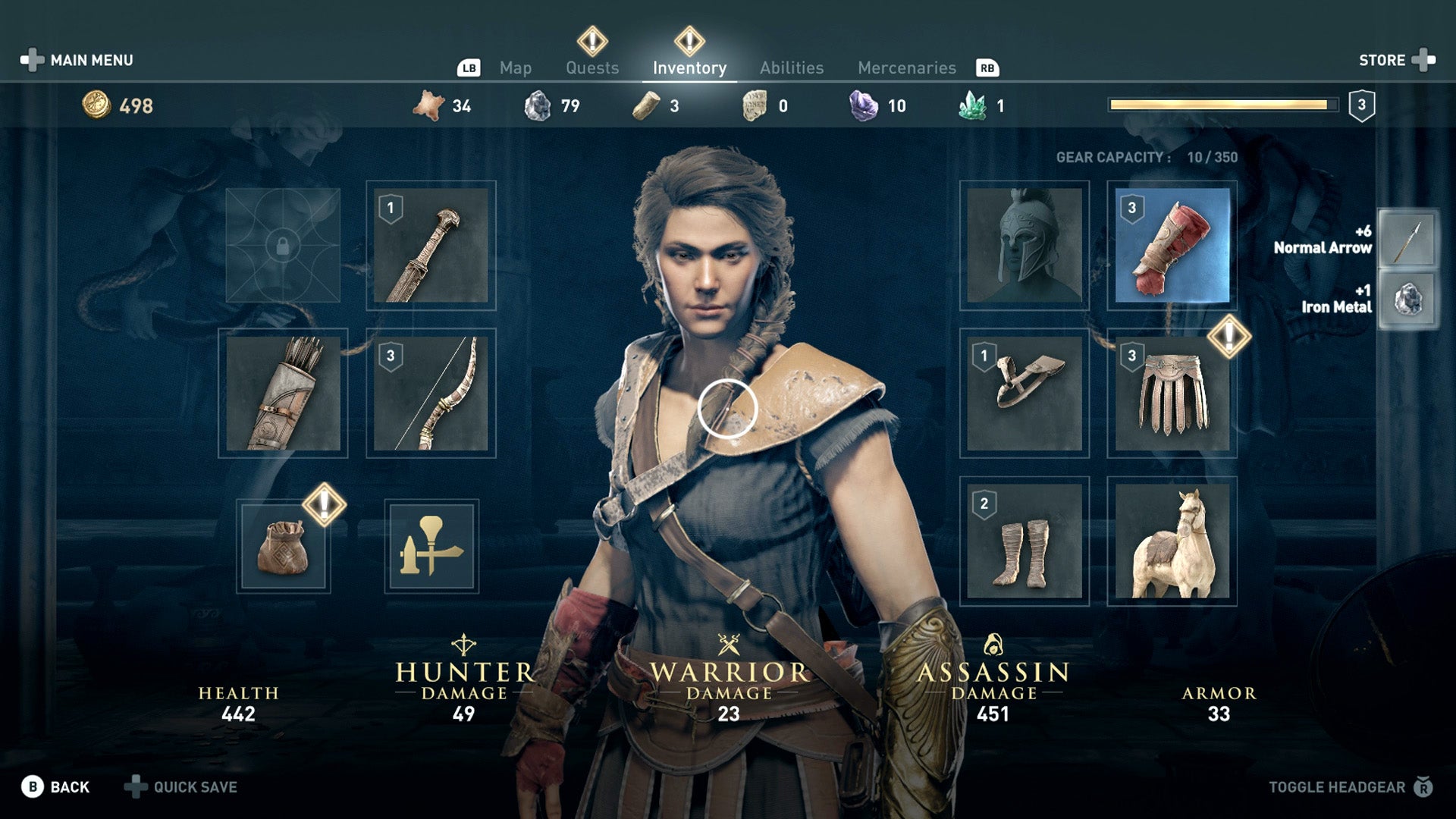
Also...
- Combat is completely in real-time and similar to a hack and slash. I'm told the guiding reference point was the God of War (2018), and that shows.
So we have action games trying to be RPGs, and RPGs trying to be like action games. Sounds like they're going more Mass Effect, especially with a 3-person party?
However, I'm afraid that it will only be a poor copy that doesn't even have half the options that GoW had.
I don't want to rehash the old argument between real-time, RTwP, and turn-based but the further a RPG goes real-time, the furthest it strays from RPG roots (which is tabletop).
This comes down to one fundamental problem:
1. a real-time game that does not involve some type of reaction speed and skill probably won't end up being fun.
2. a RPG is most like its tabletop ancestors when not involving a player's skills, but rather that of the character.
3. this turns most fights from being a celebreal, tactical experience more to a frenzied mix of cooldown watching and target prioritization, since most RPG devs can't grasp what makes real-time combat fun.
Which in my opinion, is less interesting combat.
I just tried to listen to those to chumps and boy when they get to discussing what constitutes an RPG :barf:
lycanwarrior
Scholar
- Joined
- Jan 1, 2021
- Messages
- 1,523
I just tried to listen to those to chumps and boy when they get to discussing what constitutes an RPG :barf:
That Matt guy especially luvs sucking off EA. Hell, he even thinks that Actiblizz is doing better quality-wise now with OW2 (not even a true sequel at all) and WoW Dragonflight, an EXPANSION.
I don't take anything that guy says seriously whatsoever. Looks like a pathetic betacuck/faggot.
lycanwarrior
Scholar
- Joined
- Jan 1, 2021
- Messages
- 1,523
Uh... is the leak really enough content for a 40 min long video?
From what I gather, the leak just confirms what everybody expected from Dreadwolf: moving further away from its RPG base and towards action a la Mass Effect 2/3.
Most of their videos are long like that lol.
Myobi
Liturgist
- Joined
- Feb 26, 2016
- Messages
- 1,529
Just finished, most of it it's just "blá blá blá i want extra ads blá blá blá"...I just tried to listen to those to chumps and boy when they get to discussing what constitutes an RPG :barf:
Long story short:
- Combat is completely in real-time and similar to a hack and slash. I'm told the guiding reference point was the God of War (2018), and that shows.
- Player has their regular combo attack and then their abilities as well as a special bar which generates allowing you to pull off a special move. I don't really understand the comparison to FF15's wheel. It's standard Dragon Age ability wheel.
- There was no party control demonstrated. I think it's a safe bet to say you will not be able to directly control your party members in the game. That said, you likely will be able to tell them to execute certain abilities. But apparently that was locked off in the Alpha.
- The most immediate thing you noticed is that animation quality has DRASTICALLY improved. Like, for any other AAA title it's probably not that big a deal. But we've never seen animation quality this good in any BioWare game. I didn't actually play it, but I can tell it probably feels really good to control your character. No more stiff animations, it's all very fluid and seems also very responsive.
- Jumping has also been retained. So, rejoice if you enjoyed jumping a lot in DAI.
- As the character was a sword and shield dude, he was able to parry attacks from enemies and follow up with counters. It's hard to tell their exact abilities, they only had two on hotkeys along with a special. But one appears to basically be a drop kick and the other a charged sword attack. I'm not sure exactly what the special attack does.
- The UI is similar to DAI, but this is also Alpha and UI is the last thing finalized in any game. Character has a chest slot, a helmet slot, a primary weapon slot, and a shield (secondary weapon?) slot. For accessories, one amulet slot, one belt slot, and two ring slots.
- Oh and the player character's hair looked glorious. I mean, it was clipping right through their helmet. But it was flowing and bouncing as they moved. Finally, no more stiff ass hair. Now, let's hope we have more than just two black hairstyles.
- Enemies were pretty much just variations of darkspawn, except the dragon, but again they seemed to have Red Lyrium powers.
...then there was some alpha game footage too, but the links were taken down.
Assisted Living Godzilla
Prophet
- Joined
- Nov 23, 2017
- Messages
- 4,821
Maybe there was some more leaked footage. But all I’ve seen was the footage in this video, which is about seven seconds of odd looking combat gameplay.
https://m.youtube.com/watch?v=F21I4XEd2I0&t=3m43s
https://m.youtube.com/watch?v=F21I4XEd2I0&t=3m43s
Cat Headed Eagle
Learned
- Joined
- Jan 21, 2023
- Messages
- 4,057
The ff15 comparison might've come from the next point in your post. In that game you are also unable to directly control your party members, but you can do certain special attacks. I should really go back to FF15 and check but the bar filling up to allow a special attack is pretty much a limit break.Just finished, most of it it's just "blá blá blá i want extra ads blá blá blá"...I just tried to listen to those to chumps and boy when they get to discussing what constitutes an RPG :barf:
Long story short:
- Combat is completely in real-time and similar to a hack and slash. I'm told the guiding reference point was the God of War (2018), and that shows.
- Player has their regular combo attack and then their abilities as well as a special bar which generates allowing you to pull off a special move. I don't really understand the comparison to FF15's wheel. It's standard Dragon Age ability wheel.
- There was no party control demonstrated. I think it's a safe bet to say you will not be able to directly control your party members in the game. That said, you likely will be able to tell them to execute certain abilities. But apparently that was locked off in the Alpha.
- The most immediate thing you noticed is that animation quality has DRASTICALLY improved. Like, for any other AAA title it's probably not that big a deal. But we've never seen animation quality this good in any BioWare game. I didn't actually play it, but I can tell it probably feels really good to control your character. No more stiff animations, it's all very fluid and seems also very responsive.
- Jumping has also been retained. So, rejoice if you enjoyed jumping a lot in DAI.
- As the character was a sword and shield dude, he was able to parry attacks from enemies and follow up with counters. It's hard to tell their exact abilities, they only had two on hotkeys along with a special. But one appears to basically be a drop kick and the other a charged sword attack. I'm not sure exactly what the special attack does.
- The UI is similar to DAI, but this is also Alpha and UI is the last thing finalized in any game. Character has a chest slot, a helmet slot, a primary weapon slot, and a shield (secondary weapon?) slot. For accessories, one amulet slot, one belt slot, and two ring slots.
- Oh and the player character's hair looked glorious. I mean, it was clipping right through their helmet. But it was flowing and bouncing as they moved. Finally, no more stiff ass hair. Now, let's hope we have more than just two black hairstyles.
- Enemies were pretty much just variations of darkspawn, except the dragon, but again they seemed to have Red Lyrium powers.
...then there was some alpha game footage too, but the links were taken down.
All in all, I think they're trying to go for the FF15 vibe, mixed in with GoW2018 stuff. Your average AAA stuff I'd say. It's likely going to have a warmer reception than DAI at this point.
Myobi
Liturgist
- Joined
- Feb 26, 2016
- Messages
- 1,529
Alpha footage from 2021 or 22, can't remember.odd looking combat gameplay
Moar hack & slash shit... meh.
AscendedFlames
Savant
- Joined
- Feb 13, 2018
- Messages
- 155
In FF15 combat, you can switch between characters, if I'm not mistaken you have to unlock that ability though and that's later on in the game. It made no sense that you could not switch between them from the start since that's what they were going for. I believe that the Tales of games has also been doing this for a very long time.
Assisted Living Godzilla
Prophet
- Joined
- Nov 23, 2017
- Messages
- 4,821
In FF15 combat, you can switch between characters, if I'm not mistaken you have to unlock that ability though and that's later on in the game. It made no sense that you could not switch between them from the start since that's what they were going for. I believe that the Tales of games has also been doing this for a very long time.
Yeah, I think that came in some update. I’m pretty sure by Royal Edition anyways you could switch between everyone. But on release I don’t think that was something you could do.
1. a real-time game that does not involve some type of reaction speed and skill probably won't end up being fun.
Very astute observation, but only if we are talking about RPGs. It could be fun, but nobody can pull it off.
And RTwP looked like totally the right approach, but it ended leading to either dumbing down or making RPGs an action ones. So turn based ended always been the safer route to design RPGs.
I'm surprised that the advancement of AI hasn't made somebody revisit the RTwP approach to RPGs. More user friendly and easy to set up pause or behavior instructions seems like the natural focus for a good game designer. I always thought the best feature in DA:O was the "tactics" commands. Whomever designed that should be given piles of cash to make more games.
Ryzer
Arcane
- Joined
- May 1, 2020
- Messages
- 8,662
Is there a single DnD player at Bioware? or to put it simply is there anyone at Bioware who played Baldur's Gate 1 or 2? Not that they are truly exceptional but it provides a template or an idea of what an RPG should be.
The impression I get from the leaks is that Bioware tried to mix everything mainstream into their new game with no coherence whatsoever.
The impression I get from the leaks is that Bioware tried to mix everything mainstream into their new game with no coherence whatsoever.
I think it's all danger hair types now, tbh. Even Gaider is gone.Is there a single DnD player at Bioware? or to put it simply is there anyone at Bioware who played Baldur's Gate 1 or 2? Not that they are truly exceptional but it provides a template or an idea of what an RPG should be.
The impression I get from the leaks is that Bioware tried to mix everything mainstream into their new game with no coherence whatsoever.
Cat Headed Eagle
Learned
- Joined
- Jan 21, 2023
- Messages
- 4,057
I had skipped over this comment and found it interesting. I see a lot of people trying to suggest DD type gameplay to Bioware, and I would totally see them ignoring those things. The BSN was a weird place but it got hit pretty bad when TW2 came out and trampled all over DA2. DD was released in the same time frame so the comments suggesting that type of play could've been seen as an attempt of trolling in the eyes of Bioware's people. Besides, there's the little fact that DD is a japanese game. Sometimes, western devs get sensitive when such comparisons are made (cue Ubisoft's devs when Elden Ring came out). Besides, DD wasn't a financial hit, so they probably felt like it was stupid to "low" themselves to include stuff from a game that "failed".It’s kind of funny they’re going action. Something I remember seeing quite a lot of while looking at the old BioWare forums before they got shutdown was people over there asking them to make the next Dragon Age game play like Dragon’s Dogma. And then sometime someone from BioWare would come in and pooh-pooh the idea like they were above Dragon’s Dogma’s gameplay and doing something better.
I've read that D&D is more popular than ever, but it's the McDonalds of pnp rpgs. So yeah.Is there a single DnD player at Bioware? or to put it simply is there anyone at Bioware who played Baldur's Gate 1 or 2? Not that they are truly exceptional but it provides a template or an idea of what an RPG should be.
The impression I get from the leaks is that Bioware tried to mix everything mainstream into their new game with no coherence whatsoever.
Sarathiour
Cipher
- Joined
- Jun 7, 2020
- Messages
- 3,281
Last time I checked, there was not a single dev that was on DAO who's also working on this.
While true, I suspect he didn't have 5th Edition in mind when he made this comment, at which point you can still hold this view, but it's also the Great Grand Daddy of PnP AND C RPGs.I've read that D&D is more popular than ever, but it's the McDonalds of pnp rpgs. So yeah.Is there a single DnD player at Bioware? or to put it simply is there anyone at Bioware who played Baldur's Gate 1 or 2? Not that they are truly exceptional but it provides a template or an idea of what an RPG should be.
The impression I get from the leaks is that Bioware tried to mix everything mainstream into their new game with no coherence whatsoever.
- Joined
- Jan 28, 2011
- Messages
- 100,684















https://blog.bioware.com/2023/02/23/bioware-community-update-all-by-design/
BioWare Community Update: All By Design
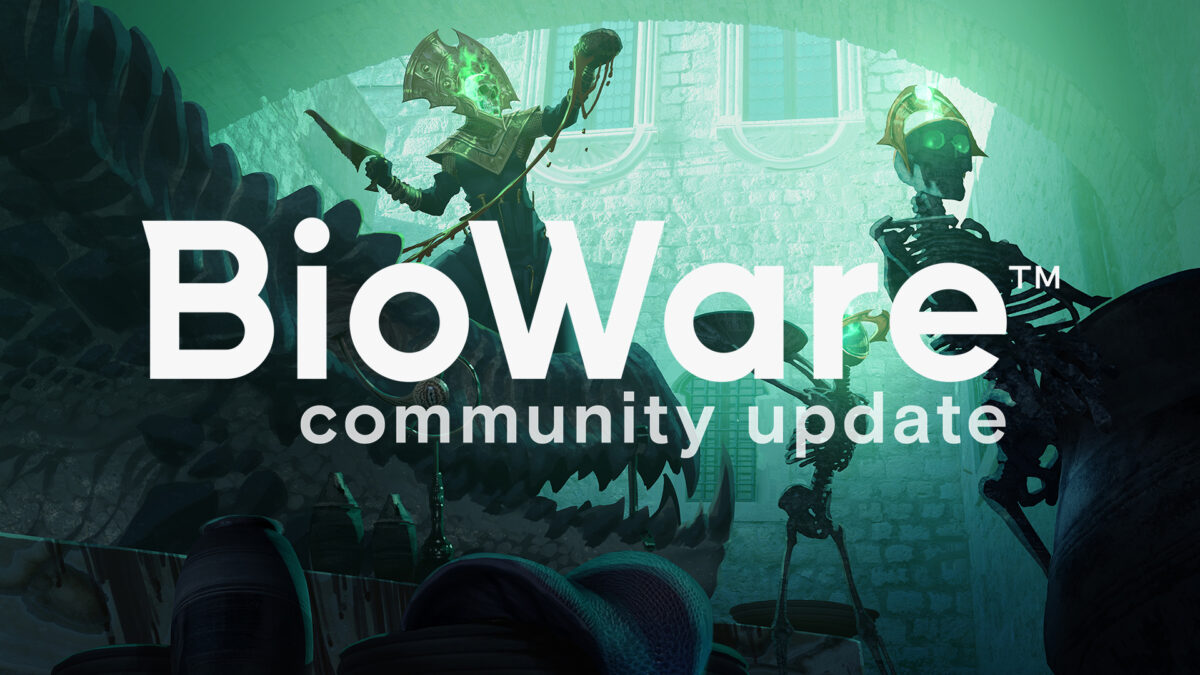
Welcome to the first Community Update of 2023!
As promised in our last BCU, this time around we’re discussing what our game designers are up to. The responsibilities of a game designer can differ from studio to studio, so we’ll first jump into how our team is handling the design work for Dragon Age: Dreadwolf™. Let’s get to it!
When we use the term “designer,” we aren’t referring to someone who visually creates outfits or environments, as you might expect from a fashion or landscape designer in the real world. In game development, those would be our artists. Our designers help craft, balance, and conceptualize the player’s journey—working with artists, programmers, writers, and more to build out the game in a highly collaborative process.
In this blog, we’ll look at a key RPG system and how three distinct types of game designers are involved in making them.
There are many other kinds of designers, too! Gameplay designers focus on creating and balancing the moment-to-moment gameplay, technical level designers create the building blocks for level designers to map out the player’s journey through locations, technical UI designers tailor how information is clearly surfaced to the player, cinematic designers craft scenes for the best storytelling experience, and narrative designers make sure the story’s flow of information to the player is a cohesive experience.
- Systems Designers work on a variety of features across the game, like skill trees and difficulty levels. Their goal is to create a vision for features that will directly impact the player’s experience.
- User Experience (UX) Designers, collaboratively with systems designers, take the vision and explore how players will interact with it by creating mock-ups and early user flows.
- Technical UX Designers then build it in-engine, working with the systems and UX designers in a constant back-and-forth, keeping the player’s experience and usability in mind at all times.
Now that we’ve gone over the basics of being a game designer, we’re going to talk about how they’re working together on Dreadwolf. Past Dragon Age™ games have all handled RPG systems, such as the player’s progression, differently, so naturally, we’re being just as experimental on Dreadwolf, taking the learnings of the past while also trying something new.
Skill Trees are a fundamental part of a deep RPG experience and give our players the ability to customize how their character functions in combat. A key belief on the team is that when a player invests a skill point, it should have a clear, tangible effect on the game, such as an ability or impactful perk. What those are and how they’re implemented in-game is handled by multiple designers, starting with a Systems Designer!
Luke Barrett: Whenever we're envisioning something new, we're always presented with a Problem Statement we're trying to solve. Sometimes, especially for larger systems, they are very high-level, such as “The Player needs meaningful choices as they progress through the game,” or “The Player needs to feel more powerful as they progress through the game.” Together, these combine into a variety of different ideas as there are many ways to solve those problems, so it helps as a general rule to start introducing constraints and Player Statements to narrow things down. A Player Statement might be something like, "As a Player, I want my choices to matter.”
Through the use of working sessions and brainstorming meetings, we narrow down what type of solution we want to pursue and then move on to doing competitive analysis. In this case, we made a vision board with pictures of skill trees, talents, etc. with a list of pros and cons. We also counted how many unique nodes existed and how far the player could realistically invest.
[IMG alt="Brief - Skills (Character Progression)
Author: Luke Barrett
XD: Bruno Porrio
RPG Programming: Darrell Christmas
UI Programming: Andrew Steadman
Overview
What is this feature?
An all encompassing progression system to convert points gained from level up into additive character power growth."]https://eaassets-a.akamaihd.net/blog.bioware.com/wp-content/uploads/2023/02/Design-Doc-Skills-1-1024x444.jpg[/IMG]Intro of original design doc for SkillsLuke, cont.: We take all of this information and write up a vision doc (sometimes called a 1-pager, design doc, or brief) that’s intentionally very brief and digestible and pulls together all of these problems, constraints, and user statements. It encapsulates our goals for how the design will solve them.
Here is an example of two of our original statements and some bullet points under them:
We really wanted to have something that allowed the player to character-build in a way that allowed them to reach their “player fantasy.” And because we're supporting so many choices, we've designed something that can be customized widely, as opposed to a more linear progression system.
- As a Player, I can drive my character’s power through node acquisition
- Nodes grant significant power gains. Each purchase feels meaningful
- All node purchases are additive power gains; nothing feels like a useless purchase to get to “real” nodes
- A variety of types of nodes grow the character in multiple ways, not just stats
- As a Player, I can explore the various nodes in the skill tree and make a plan
- Player must be able to fully navigate the skill tree regardless of investments
- Nodes have clear descriptions and videos where applicable
- Player has an understanding of how many total points they have to work with
[IMG alt="Design Goals
Players are able to create a variety of viable builds, in conjunction with itemization, to help reinforce their desired playstyle while making interesting choices throughout the process.
Players are excited about long term progression goals and understand how to work towards them
Players are not overwhelmed by the magnitude of options at any one time.
Each purchase feels meaningful, having tangible benefits to the Player."]https://eaassets-a.akamaihd.net/blog.bioware.com/wp-content/uploads/2023/02/Design-Doc-Skills-3-1024x329.jpg[/IMG]Initial design goals following the Player StatementsLuke, cont.: Once we have enough constraints and player statements together, then we (finally!) start building the design. This is where we start doing prototypes and work with UX to flesh out ideas to see how a design may feel, both as its own entity and how it works with the rest of the game.
Fun fact: I built a very early prototype in Excel for one of the ways we thought about solving the Problem Statements using a lot of buttons and scripting. (Important note: Designers aren't programmers!)
Very early prototype for skill tree functionality exploration—names are placeholders
And that’s just the beginning! Once a game designer like Luke has established the vision of the feature to address the Problem Statement, it then moves over to one of our UX Designers to start exploring how our players might interact with it.
Bruno Porrio: As a UX designer, my job is to approach design in Dreadwolf from a player-experience perspective. Our team partners up with other devs across the project and through ideation, prototyping, iteration, research, and feedback we help shape the vision for how players will interact with the game—from in-world signs and how the player affects the world to user interfaces and interaction design.
Let’s use the skill tree as an example. We take what starts as an early vision from the systems design team and poke holes, ask questions, and start developing what the feature will look and feel like (in this case, through user-interface design). We usually start with sketches, interactive wireframes, mock-ups, or in-game prototypes and validate them through testing and multiple rounds of feedback. At the end of the day, it’s a process where the system informs the experience design, and the experience design helps shape the system.
Initial class specialization skill tree wireframe—node total & layout subject to changeBruno, cont.: After multiple rounds of iteration and validation, we landed on the finalized design of the skill tree (which we can’t wait to show you). It was very important to us that the fantasy of playing a certain class and the customization options would come across clearly and at a glance without overwhelming the player. It was key to our team to take something that is usually complex and make it accessible and simple to read.
Overall, I love the skill tree. Not only because it’s an intuitive, fun part of our game, but because it’s also a great example of how the Experience Design team can help craft the vision in partnership with the systems design team.
From there, another designer jumps in to take the vision and mock-ups and turn them into something tangible in the Frostbite engine. We call those devs our Technical UX Designers. Game Designers, UX Designers, and Technical UX Designers constantly work together, providing back-and-forth feedback on each other’s work all the way until a feature is completed.
Kelsey Wicentowich: Once the design is in a good place and the system has been stood up, it's passed over to a Technical Designer (like me!) for implementation. Technical UX Designers are actually a relatively new position at BioWare. The first ones were originally brought on a few years ago to help bridge the gap between the UX designers, programmers, and artists as UI (user interface) technologies changed and advanced.
In-engine mock-up—not representative artKelsey, cont.: We use mock-ups provided by the UX Designer as a starting point and build out the UI in-game, including the general layout and navigation of the screen. Every UI is a collaborative effort between the XD (Experience Design) team and other pillars of the game team. We go back and forth with programmers and other game designers to figure out how to gather the data we need to display to the player. Larger features, like the character screen, really come alive once you start pulling in even more departments like character design and lighting to bring it all together.
But the work doesn't stop once the feature is functional in-game. It's at this point that we can truly start to evaluate how it feels and how it reads to a player. Does the navigation work well? Is the information overwhelming or confusing? Designs change and iteration continues until we find the right balance between the designer's vision and the player experience.
From features like the Detailed Stats page that cater to RPG enthusiasts to hand-crafted locations you’ll come to explore and more, design is a topic we could talk about endlessly. It’s a subject we’ll likely touch on again in the future, too, when we talk about other parts of game development, so keep an eye out!
Every week, we see so much amazing community artwork from all of you. It’s always a delight to share some of the incredible pieces here! Seeing you bring these characters to life in unique styles is such a wonderful treat for everyone on the team.
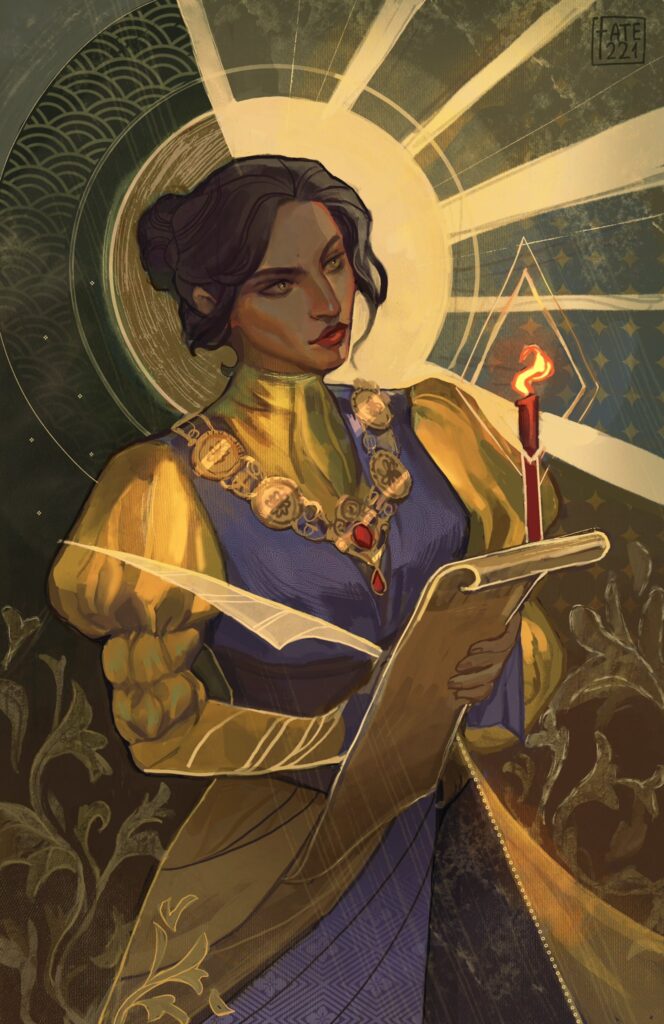
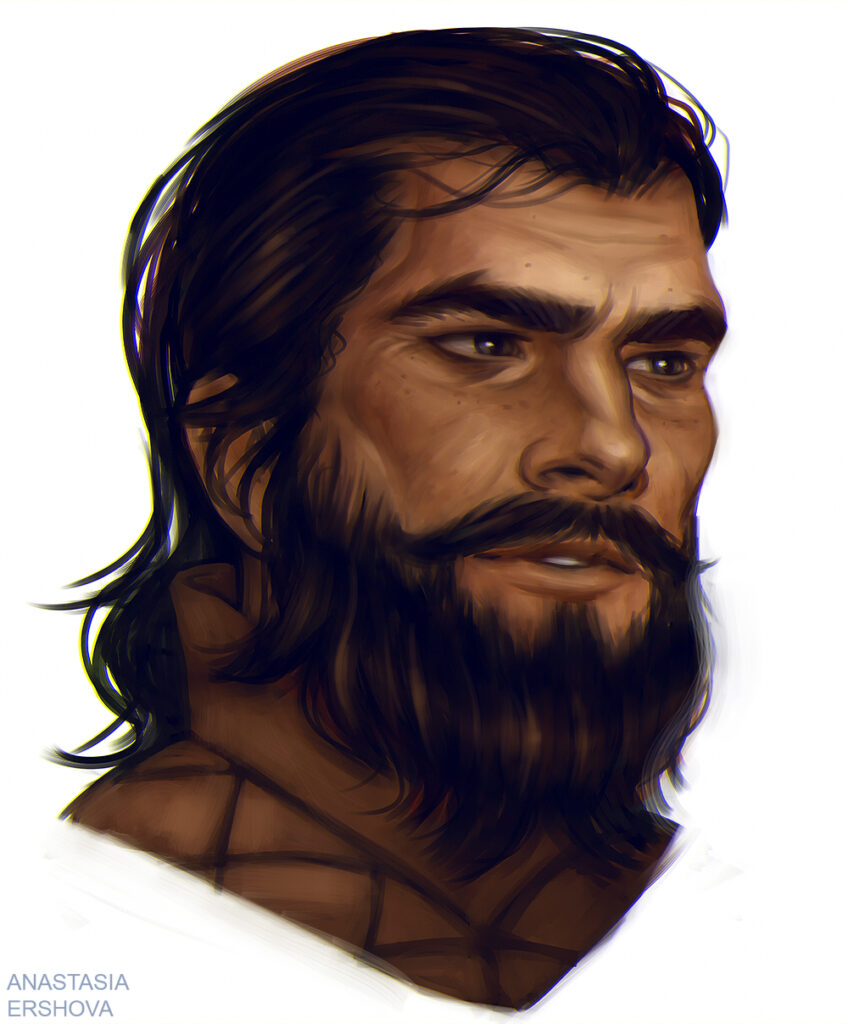
Josephine by Lohyna | Blackwall by Needlesslycryptic


Rezaren by ChevalierLogan | Hira cosplay by Chaosbria
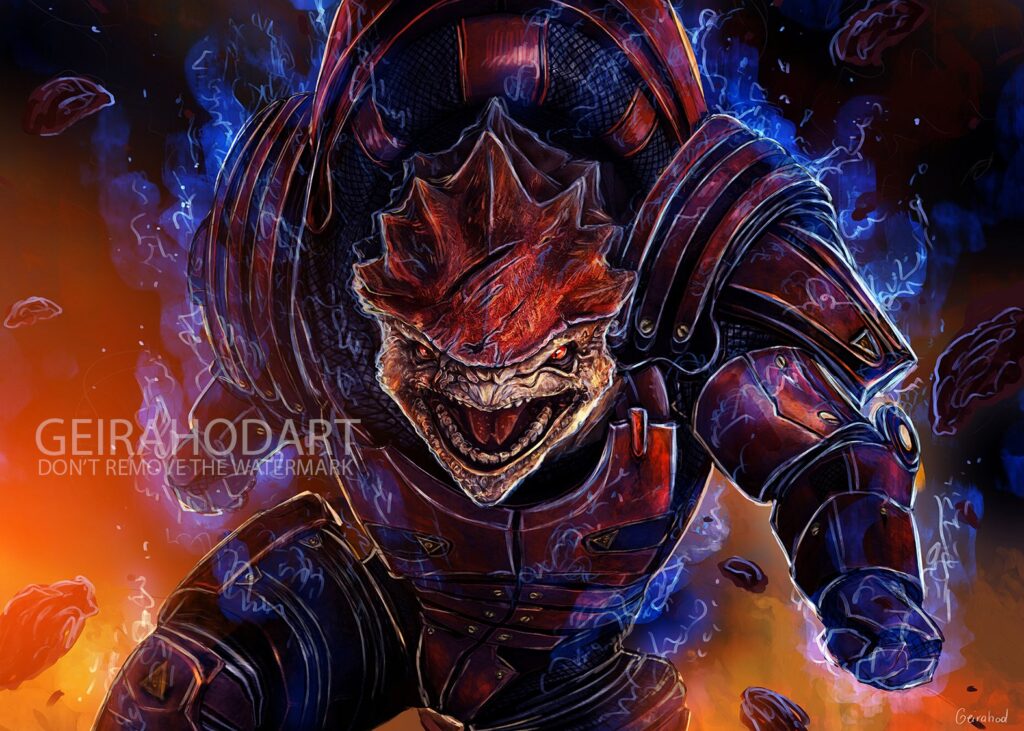
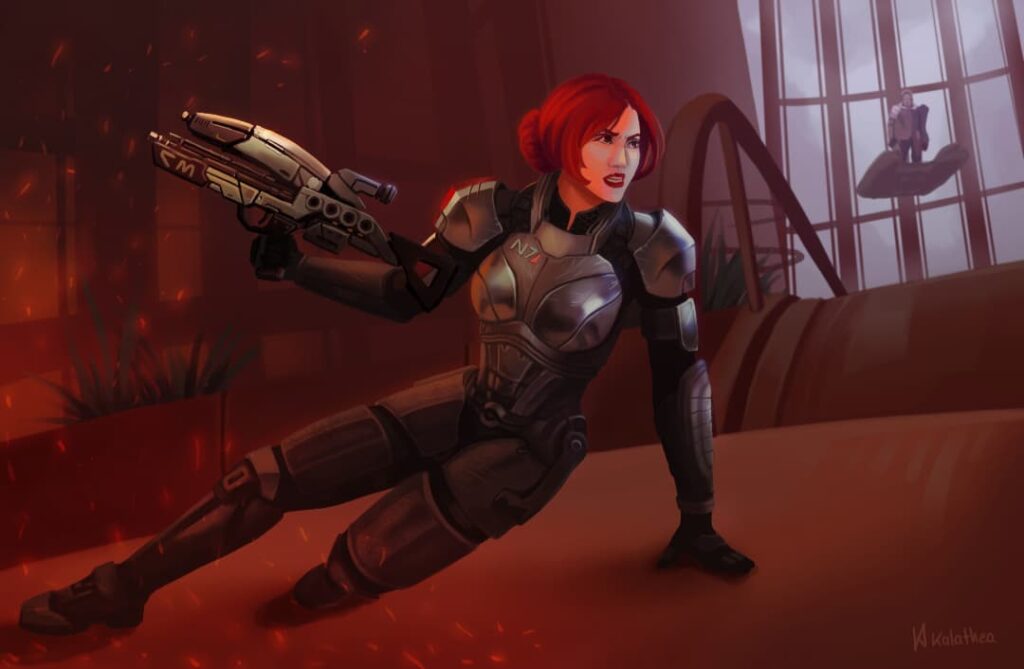
Wrex by Gierahod | Commander Shepard by Kalathea

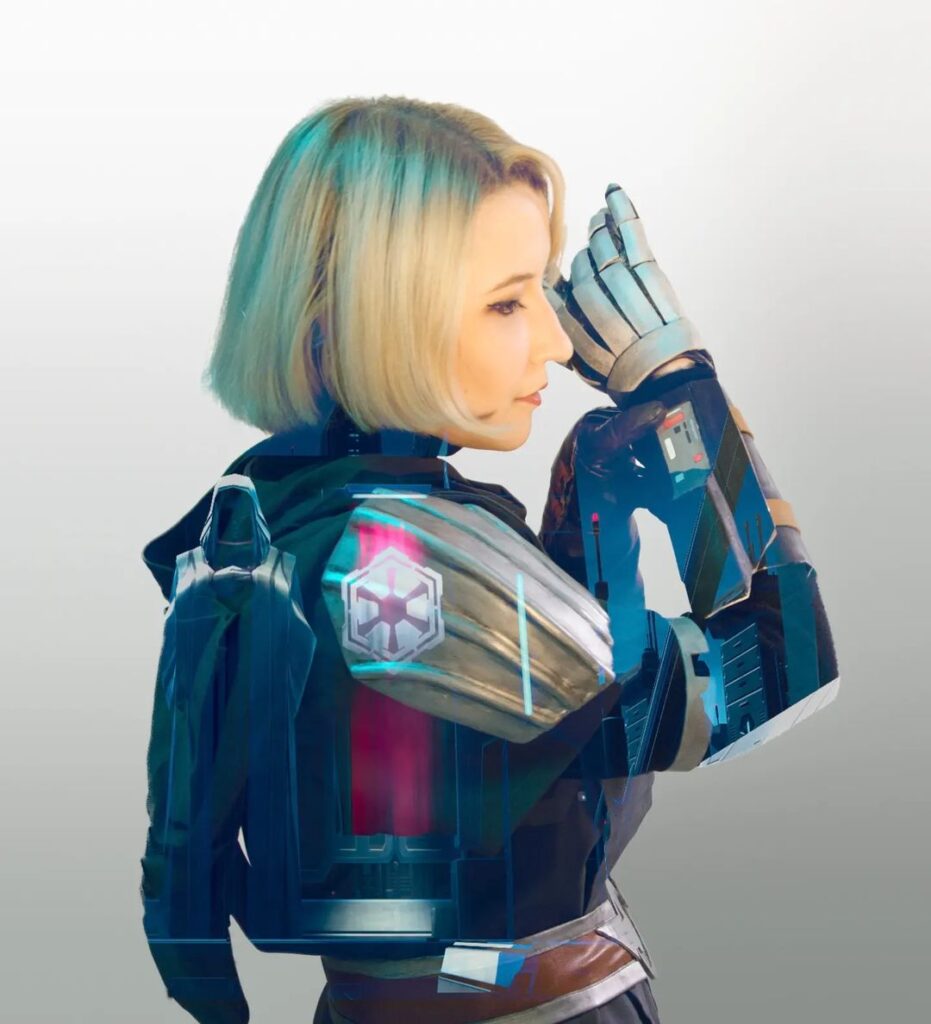
Shae Vizla by Nebulaluben | Lana Beniko by nastasiyafun
And of course, a classic Shepard moment we’ve all had.
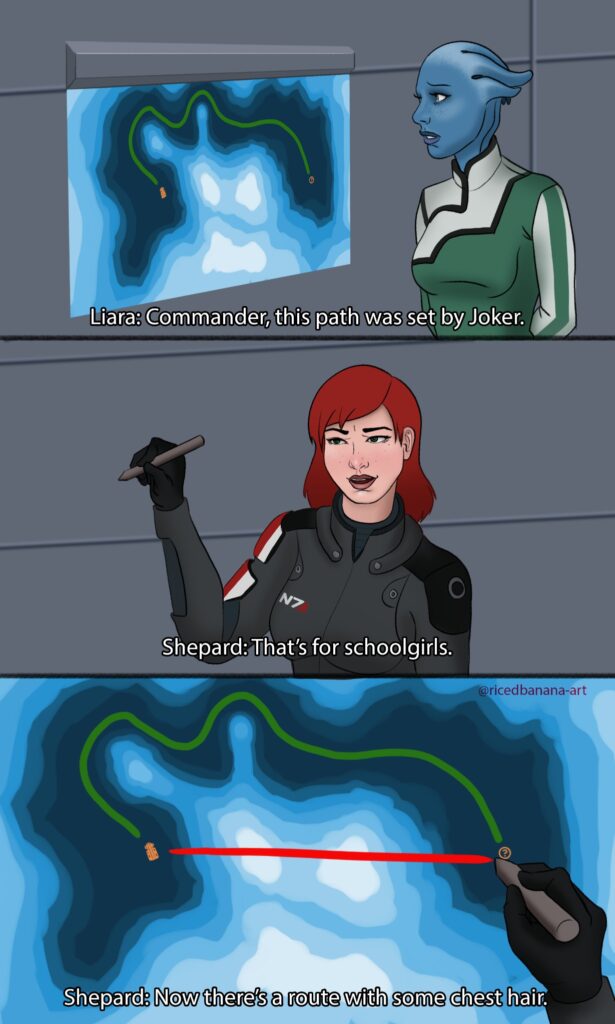
Commander “Zapp” Shepard by ricedbanana
This year, we also wanted to provide you all with a direct way of asking us questions. Now, we can’t answer every question, but we’ll try to answer what we can in our upcoming BCUs. There will undoubtedly be some that we’ll have to save for later, though.
Questions like “when will a big reveal trailer drop?” or “when does the game come out?” are things we’ll save for official announcements. However, if you have questions about a BCU’s topic (including past BCUs), games we’ve made, or other relevant questions that come to mind, please feel free to ask! You can even just ask a fun question you want devs to answer.
We’ll be keeping an eye out on Twitter (#AskBioWare), community subreddits, and community Discord servers for questions you all want to have answered. We’re looking forward to answering some!
Thanks for giving this a read! We hope you learnt something new and better understand how we’re crafting Dreadwolf. Everything we do is in hopes that we can make something great for you, and getting to talk about that is something we’re eager to do. We have a lot more we want to talk about, too.
As always, please let us know what you think of these blogs! We love hearing your thoughts—it really helps us when we’re deciding on the things we want to share.
Until next time!
—The BioWare Team
Ryzer
Arcane
- Joined
- May 1, 2020
- Messages
- 8,662
(Important note: Designers aren't programmers!)

What is the utility of their job then?
Last edited:
Sykar
Arcane
Design!


Ryzer
Arcane
- Joined
- May 1, 2020
- Messages
- 8,662
Why hiring a designer when you can hire a programmer who has his hands straight into the code and knows what he can and cannot do?Design!


Sykar
Arcane
Because then we would not get such subliminal design!











![Have Many Potato [2013] Codex 2013](/forums/smiles/campaign_tags/campaign_potato2013.png)
![The Year of Incline [2014] Codex 2014](/forums/smiles/campaign_tags/campaign_incline2014.png)




![Glory to Codexia! [2012] Codex 2012](/forums/smiles/campaign_tags/campaign_slushfund2012.png)








